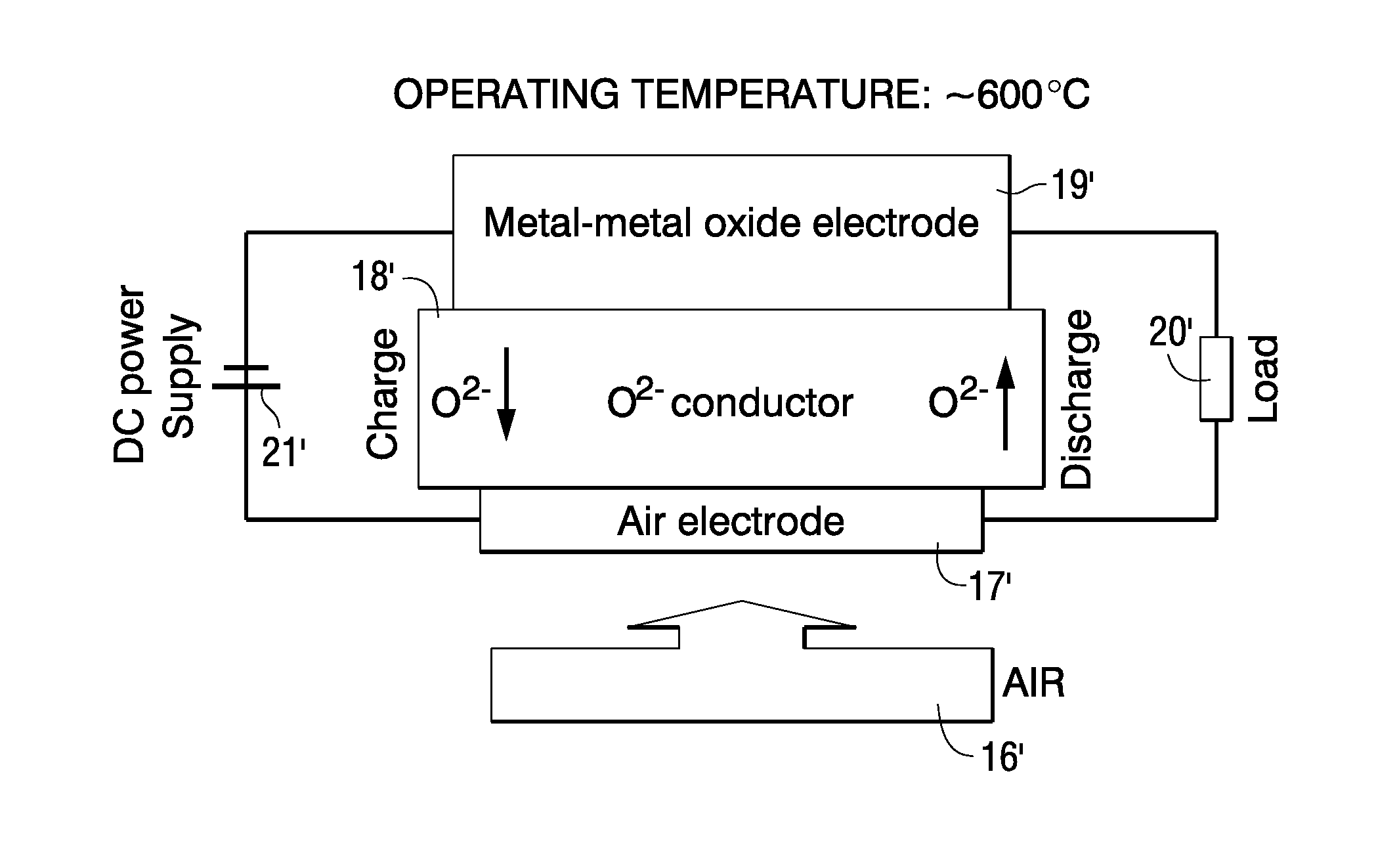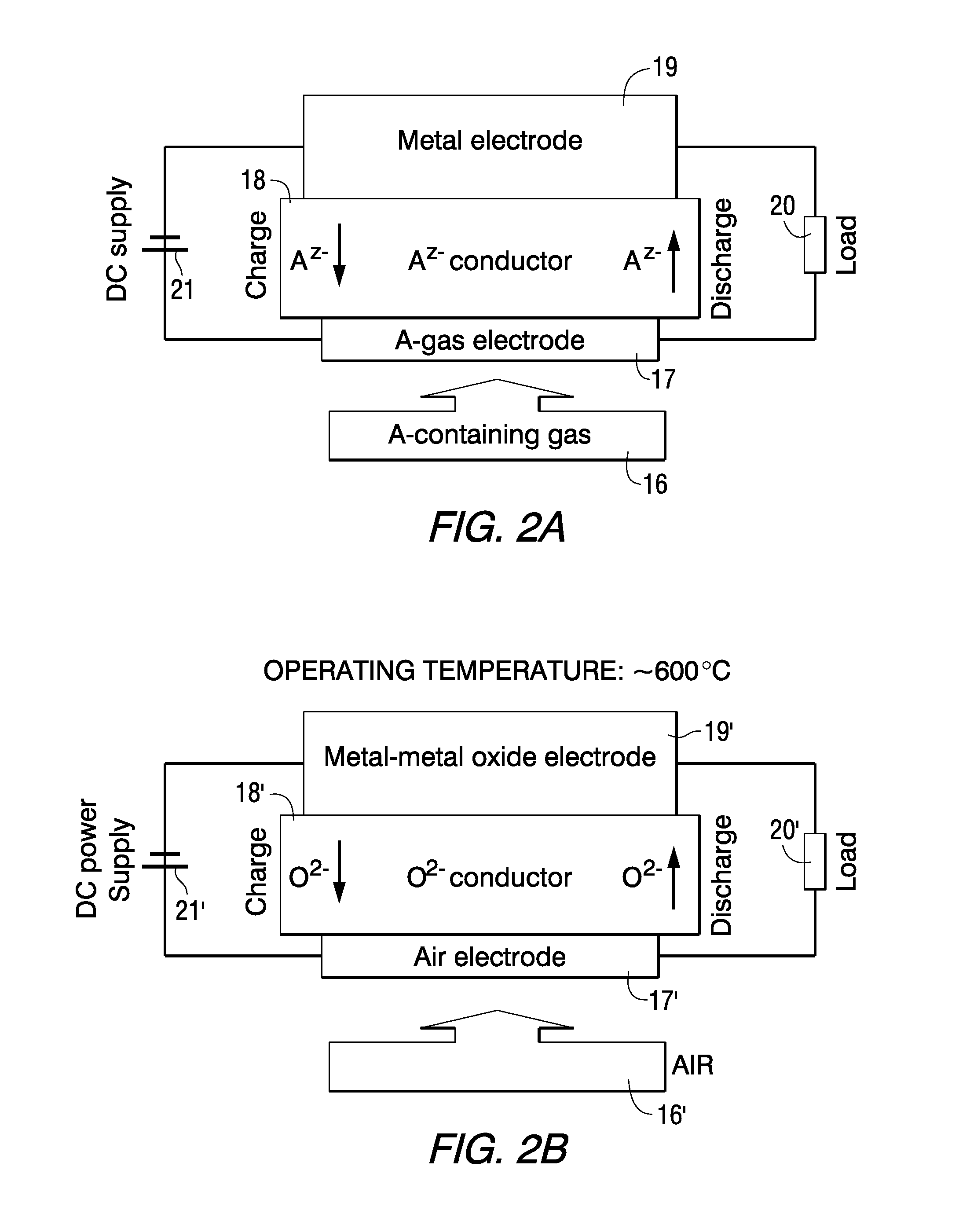Electrical Storage Device Including Oxide-ion Battery Cell Bank and Module Configurations
a technology of electric storage device and battery cell, which is applied in the field of modules, cell electrochemical configuration, and cell bank of cells, can solve the problems of almost being completely displaced from the market, requiring performance, and simply too costly to penetrate the electrochemical energy storage system
- Summary
- Abstract
- Description
- Claims
- Application Information
AI Technical Summary
Benefits of technology
Problems solved by technology
Method used
Image
Examples
Embodiment Construction
The broadest working principle of the electrical storage device of this invention is shown in FIG. 2A, where a non-fuel containing gas 16 contacts an A-gas electrode 17 and where an A conducting conductor / electrolyte 18 is disposed next to the A-gas electrode and a metallic electrode 19 where there is an electrical circuit, a load 20 and a DC supply 21. Here, there is an anion conducting electrolyte where there is ion transfer between electrodes on either side of the electrode, such ions are selected from at least one of O2−, CO2−, S2−, PO43−, I−, F−, and Cl−. The working principle of one embodiment of the oxide-ion battery configuration of this invention is schematically shown in FIG. 2B. In discharge mode, oxide-ion anions migrate from high partial pressure of oxygen side (air side in this case) to low partial pressure of oxygen side (metal-metal oxide electrode) under the driving force of gradient of oxygen chemical potential. In charge mode, the oxide-ions are forced to migrate ...
PUM
| Property | Measurement | Unit |
|---|---|---|
| melting point | aaaaa | aaaaa |
| melting point | aaaaa | aaaaa |
| temperature | aaaaa | aaaaa |
Abstract
Description
Claims
Application Information
 Login to View More
Login to View More - R&D
- Intellectual Property
- Life Sciences
- Materials
- Tech Scout
- Unparalleled Data Quality
- Higher Quality Content
- 60% Fewer Hallucinations
Browse by: Latest US Patents, China's latest patents, Technical Efficacy Thesaurus, Application Domain, Technology Topic, Popular Technical Reports.
© 2025 PatSnap. All rights reserved.Legal|Privacy policy|Modern Slavery Act Transparency Statement|Sitemap|About US| Contact US: help@patsnap.com



